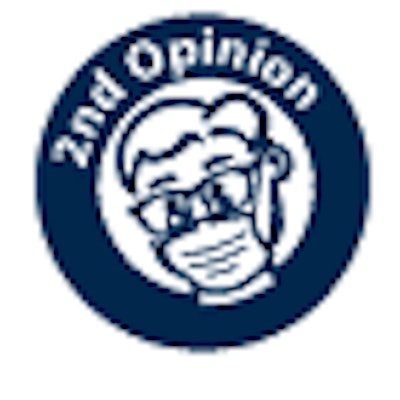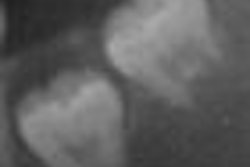
Based on long-term studies, many by oral surgeons, approximately 12% of third molars have associated pathology such as cysts (1.7%), resorption on the distal of second molars (4.8%), and periodontal bone loss (4.7%). Pericoronitis occurs in about 10% of erupting wisdom teeth. Allowing for some degree of error in these studies, perhaps 20% to 30% of third molars experience conditions and symptoms that warrant extraction (American Journal of Public Health, September 1, 2007, Vol. 97:9, pp. 1554-1559).
Is this reason enough to extract all wisdom teeth, as recommended by the American Association of Oral and Maxillofacial Surgeons (AAOMS) and many general practitioners?
Not in the judgment of the American Public Health Association. In its policy paper, "Opposition to Prophylactic Removal of Third Molars (Wisdom Teeth)," adopted November 2008, the association states:
Third-molar surgery is not without risk of injury. The most common injury is temporary and permanent paresthesia, which has been documented by numerous studies. Incidence of permanent paresthesia of the mandibular nerve varies from a low of 0.33% to a high of 1%. There is also injury to the temporomandibular joints (TMD/TMJ), which has been reported at 1.2% for patients aged 15 to 20 years. The nearly 6000 oral and maxillofacial surgeons account for 94% of the 10 million third-molar extractions in the United States annually, averaging 52.7 cases a month. Thus, an estimated 3.8 million people experience 5 million mandibular third-molar extractions each year. As a consequence, as many as 17,000 to 50,000 people have some degree of permanent mandibular nerve paresthesia and tens of thousands experience TMD/TMJ injuries, an unknown number of which also become permanent. Furthermore, patients experience an average of 2.7 days, more than 10 million days in aggregate, of discomfort and disability -- pain, swelling, bruising, and malaise -- and absence from school and loss of work and income after uncomplicated third-molar extractions. Other risks include inadvertent fractures of the jaws, damage to the maxillary sinus, damage to adjacent teeth, and occasional deaths attributed to general anesthesia.
Why, then, do so many general practitioners and virtually all oral surgeons recommend prophylactic extraction of third molars, as if every wisdom tooth was diseased or likely to become diseased? For oral surgeons, it is multibillion-dollar business. On average, oral surgeons in private practice gross more than $518,000 annually from third-molar extractions.
But for general practitioners there is little incentive. Rather, many of them believe current myths propagated by the AAOMS, such as that most wisdom teeth become pathological and will cause or contribute to systemic disease, and that they cause crowding and overlapping of anterior teeth (Journal of Oral and Maxillofacial Surgery, March 2007, Vol. 65:3, pp. 377-383; AAOMS advertisement, USA Today, September 28, 2007). Many general practitioners also confuse the prevalence of a disease with its incidence in their dental offices. Their opinions are not based on long-term scientific studies but rather on their impressions. They are either unfamiliar with or unaware of the principles of evidence-based practice -- the gold standard of responsible treatment of patients.
Evidence-based practice relies on objective scientific outcomes studies, not the impressions or anecdotal reports of clinical practitioners. It is based on the weighing of risks versus benefits. In the case of wisdom teeth, the risks of prophylactic extraction outweigh the benefits. In the absence of compelling evidence of need, evidence-based practice does not support prophylactic extraction of wisdom teeth.
Jay Friedman, D.D.S., M.P.H., has published more than 60 papers in professional journals and is author of An Intelligent Consumer's Complete Guide to Dental Health. He has more than 50 years of experience as a clinician, university researcher, consultant, dental insurance administrator, and director of large group dental practices.
Copyright © 2009 DrBicuspid.com



















